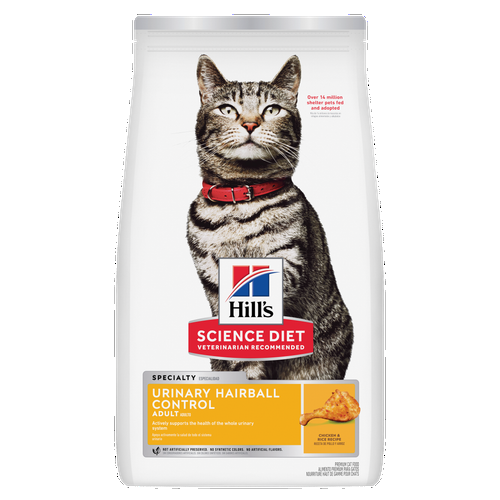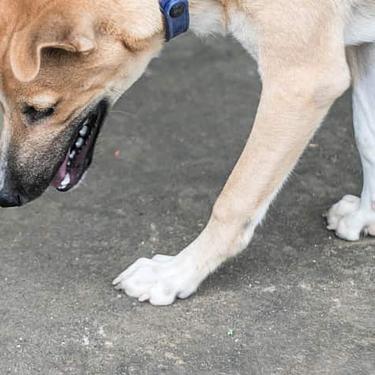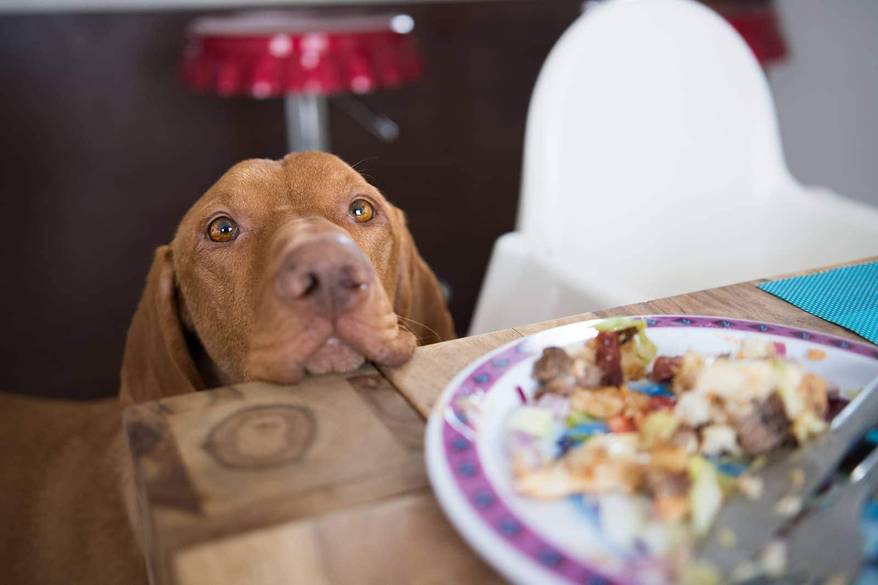
-
Find the right food for your petTake this quiz to see which food may be the best for your furry friend.Find the right food for your petTake this quiz to see which food may be the best for your furry friend.Featured products
 Hill's Science Diet Adult Oral Care Chicken, Brown Rice & Barley Recipe Dog Food
Hill's Science Diet Adult Oral Care Chicken, Brown Rice & Barley Recipe Dog FoodClinically proven kibble technology to reduce plaque & tartar build-up
Shop Now Adult 7+ Small & Mini Chicken & Brown Rice Recipe Dog Food
Adult 7+ Small & Mini Chicken & Brown Rice Recipe Dog FoodFor the unique nutritional needs of mature Small & Mini dogs
Shop Now Adult Small & Mini Lamb Meal & Brown Rice Recipe Dog Food
Adult Small & Mini Lamb Meal & Brown Rice Recipe Dog FoodFor the faster metabolism of Small & Mini dogs
Shop NowFeatured products Hill's Science Diet Adult Sensitive Stomach & Skin Dog Food
Hill's Science Diet Adult Sensitive Stomach & Skin Dog FoodHighly digestible recipe, gentle on stomachs. Nourishes skin & promotes a lustrous coat
Shop Now Adult Urinary Hairball Control Chicken & Rice Recipe Cat Food
Adult Urinary Hairball Control Chicken & Rice Recipe Cat FoodActively supports the health of the whole urinary system
Shop Now Adult Indoor Chicken Recipe Cat Food
Adult Indoor Chicken Recipe Cat FoodSupports energy level and beautiful fur in indoor cats
Shop Now -
Featured articles
 Easy DIY Dog & Cat Toys: Nine of Our Favorites
Easy DIY Dog & Cat Toys: Nine of Our FavoritesBrowse this comprehensive guide for several of our favorite DIY dog and cat toys that are sure to put a little pep in your pet's step.
Read More My Pet Ate a Lizard — What Should I Do?
My Pet Ate a Lizard — What Should I Do?Learn what to do if your pet eats a lizard, including whether they can be toxic and symptoms to keep an eye on when they've swallowed one.
Read More 15 Pet-Friendly Cities Ideal for a US Road Trip
15 Pet-Friendly Cities Ideal for a US Road TripCheck out our list of pet-friendly U.S. cities that are excellent travel options, offering off-leash dog parks and pet-friendly restaurants & hotels.
Read More -


A doctor or healthy eating blog may have convinced you to count the calories in human food, but have you ever looked at the calories in dog food? What about the calories in cat food? Understanding what and how much your pet eats is important to making sure they're getting the nutrients they need to stay healthy.

How Many Calories Does a Dog or Cat Need?
Calories needs vary by pet (for both cat and dog), so make sure to speak with your veterinarian to determine the proper caloric intake for your pet.
There is more than simple math goes into figuring out how many calories your pet should consume. For example, if your dog is extremely active and goes on runs with you every day, he will need more calories in his meal to make up for the energy he exerts while exercising. Larger breeds also need more calories to sustain their daily efforts.
Smaller pets and pets that are currently overweight may need to consume fewer calories than the standard range. Other changes such as pregnancy, aging or an illness will affect how many calories your dog or cat needs.
However, it's important to not make assumptions about the calories your pet should eat in a day. To know what range is right for your pet, speak with your veterinarian. They'll be able to take your pet's size, body and lifestyle into consideration before recommending how many calories your dog or cat should be consuming on a daily basis.
Counting the Calories in Your Pet's Food
If you're concerned about the amount of calories in dog food or the calories in cat food, but don't know how to figure out how much to feed your pet, start simple. First, the calories should be listed on the side of the can or bag just like they are for most human foods. Expect to see them listed as "kCals" or kilocalories, which is a more scientifically accurate term for calories.
The Association of American Feed Control Officials (AAFCO) suggests that kCals should be listed on pet food labels "as kilocalories per kilogram of food as fed and as kilocalories per familiar unit." This is because the different types of food — such as dry food versus canned wet food — will have different values. The AAFCO cautions against making one-to-one calorie comparisons between different types of food because the moisture content of canned food results in fewer calories per kilogram "as fed" than dry kibble.
All pet foods sold in the US will have an AAFCO statement that identifies the product as being nutritionally adequate for a dog or cat and its intended category purpose (i.e., growth, reproduction, maintenance, etc.) Always consider the statement about what life stage the food is best for. Your pet doesn't need a puppy food product, for example, if he is a senior dog. Life-stage-specific foods are formulated for the nutritional needs of a cat or dog of that age.
It's important to work with your vet when altering your pet's food, or deciding on a new food plan for a fur friend you've just brought into your home. Depending on whether you're feeding your pet wet or dry food, or a mixture of both, your vet should be able to tell you just how much of each should be consumed at each feeding.



Tasty Tips
Young pets may need several visits in their first year for vaccinations. Adult pets generally benefit from annual check-ups, while senior or special-needs pets might require more frequent visits.
What Else Affects Calorie Intake?
If you've met with your vet, developed a food plan based on your pet's individual needs and started to read pet food labels religiously, outside factors can still influence the amount of calories your pet ingests on a daily basis. Let's be honest: we all share treats with our pets, and even the healthiest treats are adding calories to your pet's diet. Ideally, calories from treats should not account for more than 10 percent of your pet's daily caloric intake.
Be honest with your vet when you're making a dietary plan. Let them know how many treats you usually give your pet throughout the day. In addition, share what type of treats you're giving your dog or cat. Packaged tidbits will have the serving size and calorie amount listed on the side, but table scraps will take a little more research to figure out how many calories you're sharing. Your vet may recommend reducing the number of treats, including table scraps, in order to keep your dog or cat at a healthy weight.
Another factor that affects calorie intake for your cat or dog is where the calories are coming from. Are they fatty calories? Is your animal consuming most of their calories from lean protein? While there aren't necessarily good and bad calories, there are definitely better choices that can influence their calorie count for the day. Just like you wouldn't eat 2,000 calories in candy bars and consider yourself healthy, you want to make sure the types of food your dog or cat eats fuels them for a day of running and pouncing.
When There is Too Many (or Too Few) Calories
Similar to humans, calories are a method for measuring the amount of energy your pet is consuming through food. Through natural biological processes, your dog and cat breakdown the food that they eat and turn it into energy. Your pet then burns that energy throughout the day through play and exercise — even snoozing burns some calories. Where understanding your pet's calorie consumption is important is how it is affecting your pet's overall health. If your dog or cat is putting on weight, they may be taking in too many calories, or not getting enough exercise. The reverse is true for pet's that look emaciated.
If you've followed your vet's advice and are feeding a recommended food and getting plenty of exercise, and your pet is not at his or her optimal weight, it may be time for another vet examination to determine if there is an underlying health condition. Your dog or cat's metabolism might not be functioning properly, which can be affected by a number of health conditions, and therefore is burning too few or too many calories for normal biological function. At this point, your vet may recommend a therapeutic pet food formulated to work with your pet's metabolic processes or a different course of treatment depending on your pet's specific case.
The food choices you make for your pets are what keep them healthy and happy. Knowing how many calories in dog food and cat food is one step to creating a delicious — and healthy — meal plan to keep your pets active for all the days of their lives.


Erin Ollila believes in the power of words and how a message can inform—and even transform—its intended audience. Her writing can be found all over the internet and in print, and includes interviews, ghostwriting, blog posts, and creative nonfiction. Erin is a geek for SEO and all things social media. She graduated from Fairfield University with an M.F.A. in Creative Writing. Reach out to her on Twitter @ReinventingErin or learn more about her at http://erinollila.com.
Related products

Improves everyday ability to get up & go

For the unique nutritional needs of mature Small & Mini dogs

For the faster metabolism of Small & Mini dogs

Clinically proven kibble technology to reduce plaque & tartar build-up
Related articles

Check out our list of pet-friendly U.S. cities that are excellent travel options, offering off-leash dog parks and pet-friendly restaurants & hotels.

Learn what to do if your pet eats a lizard, including whether they can be toxic and symptoms to keep an eye on when they've swallowed one.

Learn about veterinary dental care for your pet, including deep teeth cleaning procedures, which can help your dog or cat maintain proper dental health.

Browse this comprehensive guide for several of our favorite DIY dog and cat toys that are sure to put a little pep in your pet's step.

Put your pet on a diet without them knowing
Our low calorie formula helps you control your pet's weight. It's packed with high-quality protein for building lean muscles, and made with purposeful ingredients for a flavorful, nutritious meal. Clinically proven antioxidants, Vitamin C+E, help promote a healthy immune system.
Put your pet on a diet without them knowing
Our low calorie formula helps you control your pet's weight. It's packed with high-quality protein for building lean muscles, and made with purposeful ingredients for a flavorful, nutritious meal. Clinically proven antioxidants, Vitamin C+E, help promote a healthy immune system.

